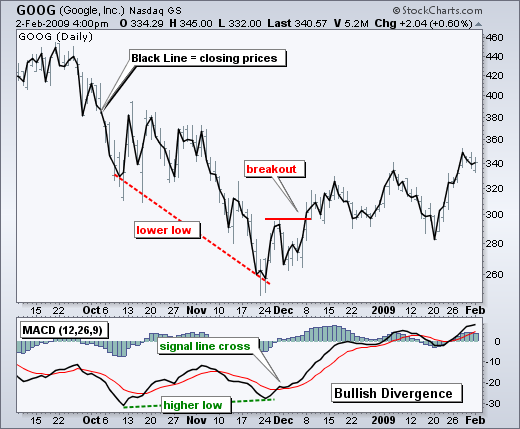MACD Convergence
Post on: 14 Август, 2015 No Comment

MACD stands for Moving Average Convergence Divergence, and this indicator is the basis of the MACD Convergence/Divergence strategy discussed in this article. Few months ago I posted article about MACD: Useful tips on trading Forex using the MACD indicator .
The indicator was invented by Gerald Appel in the 60s. The indicator has 3 components:
- 12 EMA
- A slow 26 EMA
- A fast 9 SMA, marked by a red signal line.
The MACD is used as a trend change determinant, as well as for trading convergences and divergences.
Trading the MACD Divergence
What is MACD divergence? Usually the peaks and troughs of the MACD indicator usually mirror those of the price action. Anytime the peaks and troughs of the price action deviate from those of the MACD indicator, then we say that there is a divergence. The price action will eventually correct itself in the direction of the MACD, and it is this correction that the trader aims to trade when trading MACD divergence.
The MACD divergence forms when the price makes higher highs and the MACD makes lower highs. In other words, the asset and MACD indicator are diverging away from each other, hence the name “divergence”. Once this occurs, it is time to trade the divergence, going short on the currency pair. The divergence trade can be taken at the following points:
- When a bearish candlestick formation occurs.
- If the divergence forms at a resistance point as shown by the autopivot calculator, that is another good place to go short on the asset.
We can see a classical divergence trade on the 1 hour chart of the AUDUSD. On May 22, 2012, the price of the currency pair made higher highs while the MACD indicator made lower highs, presenting a divergence trade opportunity. The signal to go short was shown by the bearish engulfing pattern candlestick pattern, which is a double-candle bearish reversal pattern. This trade delivered a good profit as the divergence corrected itself.
Another example is shown below:
In this case, the signal for correction was the evening doji star pattern, which is a very strong bearish reversal pattern. Once the divergence formed and the evening doji star appeared, it was time to go short and once again, the MACD divergence strategy worked to perfection.
The MACD divergence trade is a lot more reliable than the convergence component of this strategy, which we shall discuss below.
Trading the MACD Convergence
In order to trade the MACD convergence trade, we shift to the opposite direction, looking for the price of the asset to form lower lows while the MACD forms higher lows. In addition, we also look for a bullish candlestick reversal pattern to aid the entry. The long entry can also be made if the price is at a key support level.
An example of the MACD convergence, which is traded as a long entry, is shown below:
We can see a very clear pattern of MACD convergence where the price is making lower lows and the MACD is making higher lows, in which case we can say that price and the MACD are converging on each other. The trigger for the trade was the hammer pinbar. Another example of a convergent MACD pattern is shown below:
Here again we see a case where the asset forms lower lows and the MACD forms higher lows, producing a convergence that can be traded for profits. In this case, the trigger for the MACD Convergence trade was a bullish harami pattern .
In trading the MACD Convergence/Divergence strategy, it is essential for the trader to ensure that a positive trigger for the trade forms very clearly, after which the entry can be made.














